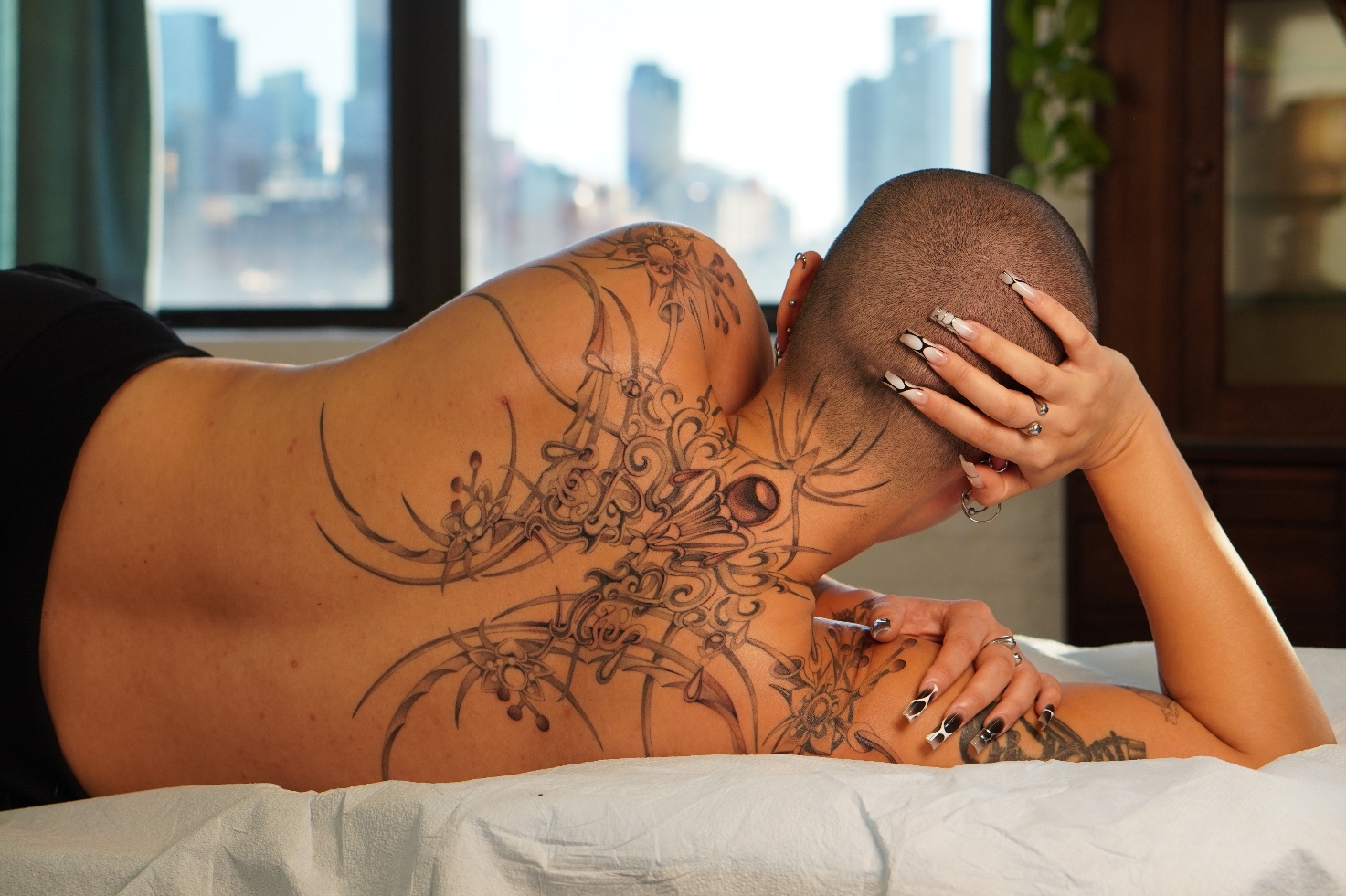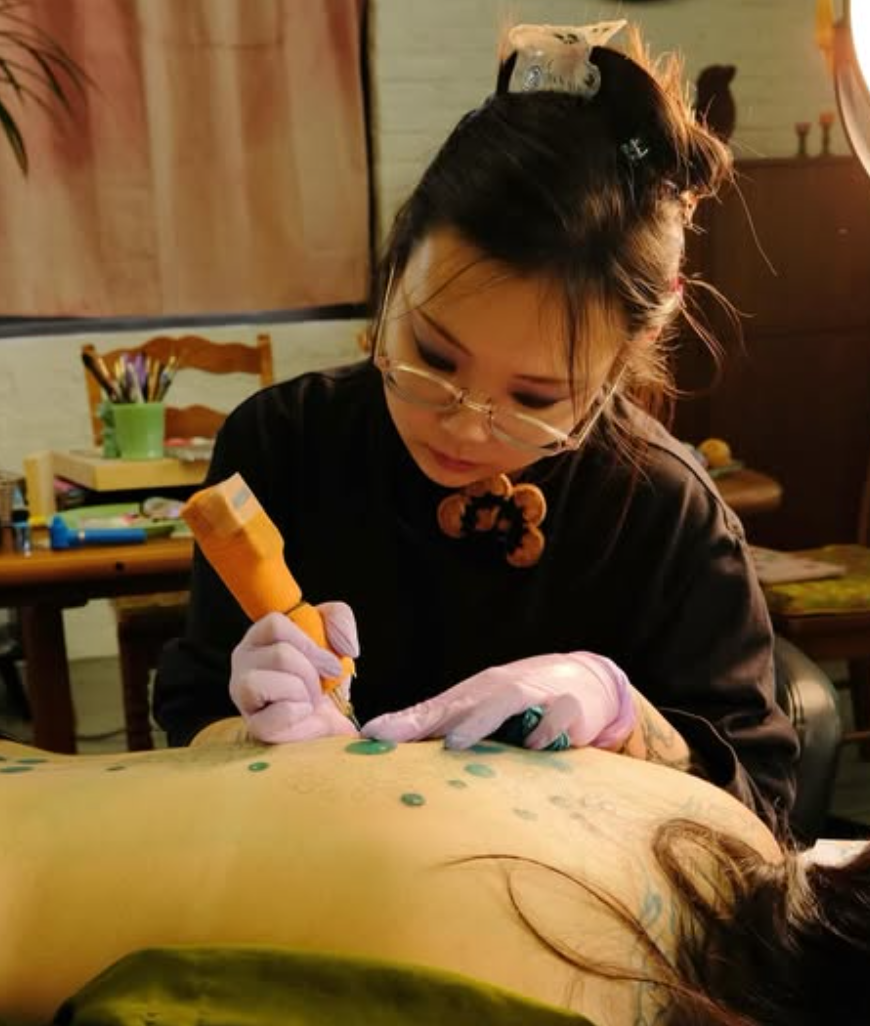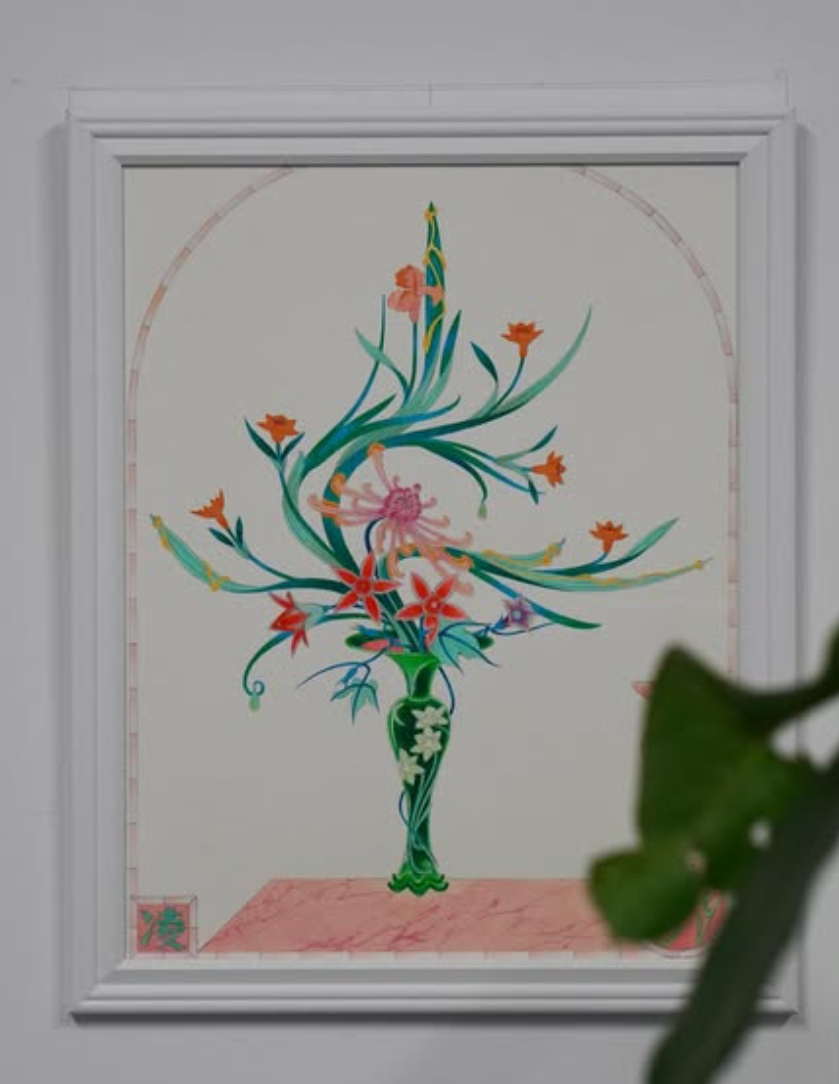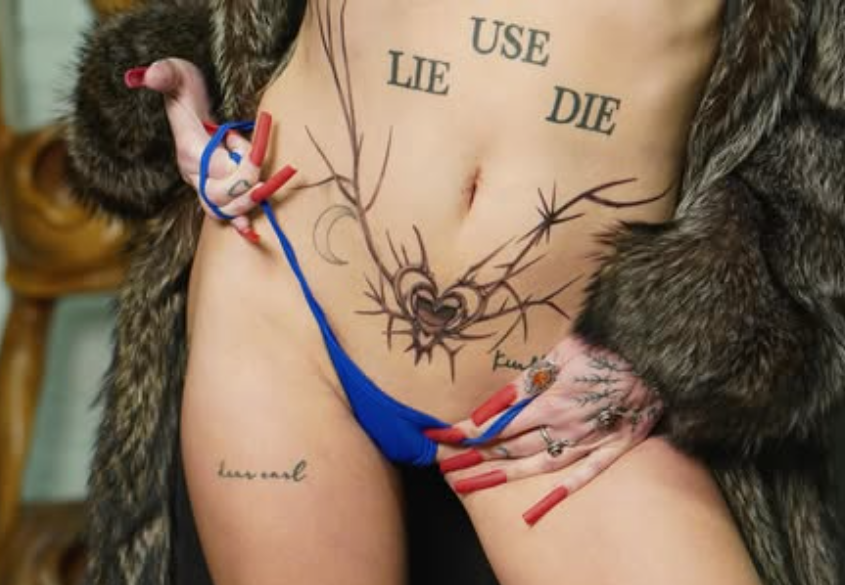Tattooing, one of the world’s oldest art forms, has always lived within dualities: the sacred and the profane, the public and the private, chaos and control. Today, we are honored to speak with Xiaoling Li—professionally known as Ling is eel—a top tattoo artist based in New York City. For her, these contrasts are not abstract ideas; they shape the fabric of her daily life.
An award-winning tattoo artist and illustrator based in New York City, Li was born in Beijing to immigrant parents from both North and South Korea. Her multicultural background has shaped a distinct artistic voice that bridges illustration, fine art and tattooing. After earning her Bachelor of Fine Arts in Illustration from the School of Visual Arts in 2020, she developed a refined and evolving tattoo style alongside her practice in traditional oil painting and visual storytelling. Her work has received international recognition, including a Merit Award in the 3×3 International Illustration Annual No.17 Show. In 2022 she exhibited an oil painting in Solace of the Myth, a curated group show featuring acclaimed tattoo artists such as Krish Trece, Filouino and Amon Maiden.
Today, based in New York, Li splits her practice between the unpredictable energy of traditional tattoo shops and the quiet intimacy of her own private studio. That choice, with one foot in each world, is deliberate and offers a window into what it means to be a contemporary tattooer navigating very different spaces.
The Street Shop: A Theater of Humanity
Traditional tattoo shops, often found along busy streets, announce themselves with neon signs that are equal parts daring and impulsive invitation. Inside, the atmosphere is electric. Walk-ins arrive in waves: construction workers squeezing in tattoos during lunch breaks, couples making spontaneous declarations of love, seasoned collectors and curious first-timers.
For artists, these shops offer an education in constant motion. “When you’re surrounded by other tattooers, you’re always learning,” Li says. “Watching techniques, exchanging ideas, sharing conversations, it’s like an unending apprenticeship.” The diversity of clients also means a constant stream of stories, personalities and perspectives.
But openness comes with friction. Tattooers, by nature, often bring intense personalities, and many shops are crucibles of clashing egos. For clients, vulnerability can also feel magnified. “It’s easy for someone to feel uncomfortable taking off their clothes in a crowded environment,” Li explains. “Even a small tattoo on the chest or ribs becomes a public act when there are strangers walking by.”
The shop itself is rarely neutral territory. Décor, rules and atmosphere are dictated by the owner. Even hanging personal artwork on the walls can require permission, leaving some artists feeling creatively stifled. “It’s stimulating,” Li admits. “It’s also a space where you’re constantly negotiating your autonomy.”
The Private Studio: Silence, Trust and Control
In stark contrast, Li’s private studio offers a refuge of silence. There are no walk-ins, no ringing phones and no competing egos. Every client has chosen her specifically, often after months of research and reflection.
The shift in atmosphere is profound. “It becomes more than just a tattoo,” she says. “It’s a real conversation, a private exchange that can feel almost ritualistic.” Clients are more relaxed, even when physically exposed, because the setting itself is intimate and safe. Sessions unfold slowly, with space for dialogue and trust.
The studio also doubles as a canvas for Li’s own identity. From the furniture to the artwork, every detail reflects her taste. “It’s where I can grow as an artist on my own terms,” she says. “The space itself becomes part of the tattooing process.”
Yet solitude demands resilience. There is no team to lean on when a client becomes difficult, no quick feedback from peers and no outside comparisons.
The Balance Between Two Worlds
For Li, the tension between these environments is not about choosing one over the other but understanding the unique value each brings.
The shop connects her to the raw pulse of humanity, sharpening instincts and placing her craft within a larger community. The studio allows her to refine her vision, create in safety and build deeper relationships with clients who arrive not by chance but by choice. Together, they form a complete picture of what it means to be a tattooer today: part artisan, part confidante, part business owner and part solitary visionary.
“Tattooing is never just about ink on skin,” Li reflects. “It’s about the environment, the relationship and the entire experience. The shop and the studio may feel like opposite worlds, but both have shaped me and both live in my work.”




